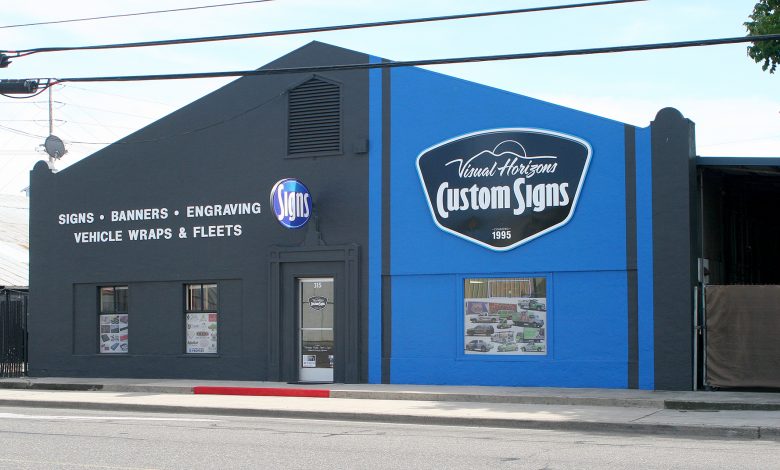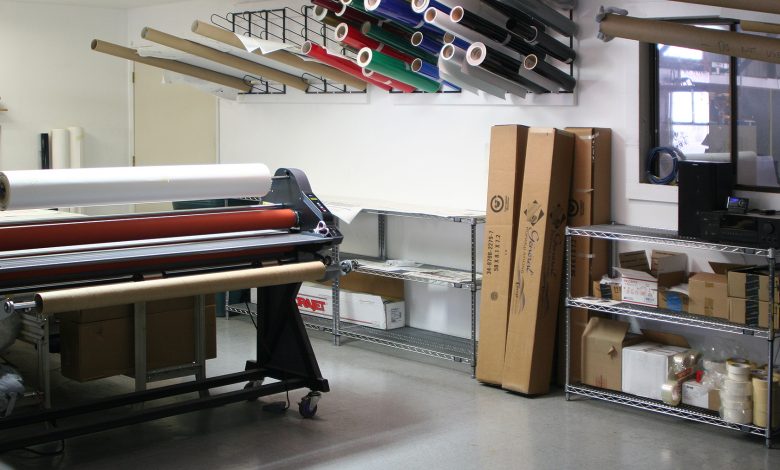Just Getting Started with Wraps? Read This
Everything you want to know about starting a wraps shop from the 2018 edition of WRAPS magazine.
Adam Sumner of Wrapix Imaging in Burbank, Calif., started his business as a sign shop but soon got into the wrap industry to combine his two passions of printing and cars.
Sumner, who grew up in the offset printing industry, started Hayes & Co. Printing in 2007 and rebranded it as Wrapix Imaging six years later. He installs wraps onto personal and commercial vehicles that help with marketing, add logos and designs, change colors and finishes, and protect the exterior paint.
It helped Sumner had some of the equipment he already needed, such as a wide-format printer and a laminator, to delve into an industry that appeals to a growing number of sign shop owners. He now has five printers, a new laminator and flat-bed mounting tables to install the wraps, which consist of a roll of film or vinyl with adhesive backing that can be adhered to a vehicle, wall, floor, window or other surface.
“I had always had a passion for cars and wanted to explore the auto industry and still apply the printing background I came from,” Sumner says. “I get to work with those cars, and it’s so fast-paced.”
Getting Started in the Wrap Industry
Sumner, who also owns Wrapix Academy, a 3M-authorized training and testing facility for graphic installations, specializes in the design, printing and installation of wallpaper and architectural wraps with an emphasis on vehicle wraps from red carpet events to fleet graphics.
To do the various types of wraps, Sumner needed to invest in equipment and training on the correct techniques of applying the vinyl or film. He also needed to understand the important steps to take and pitfalls to avoid when starting or expanding a wrap business.
“My advice would definitely be to shop around and talk to different distributors and talk to different suppliers and definitely go to trade shows,” Sumner says. “Being able to see things in person definitely helps.”
Steve and Jen Carney got into the wrap business because they both love art and the graphic design aspect of designing the wraps-they create custom vehicle wraps for high-end luxury, exotic and race cars and for building interiors, furniture and cabinets. They founded Carbon Wraps in Orlando, Florida, in 2010, in a 1,500-square-foot space, since expanding to 4,500 square feet with room for four offices and a 10-car bay.
“We’re lucky enough and blessed to work on the cool cars,” Steve says. “And we are super artistic, and we get to be creative with a lot of our wraps, too, which is nice.”
Installing wraps to change the color of a vehicle requires less equipment than wraps involving graphic elements and for commercial uses, Steve says. For instance, film wraps are presold in rolls and can be immediately installed, as long as the installer has knowledge on how to use the product and understands the types of vehicle on which it can be installed, he says.
“You’d purchase the color needed, open the box and wrap the vehicle,” Steve says. “Smaller shops will do that. … Tinting companies are now getting into solid color wraps.”
The Essential Equipment for a Wrap Shop
Wraps with graphic elements require additional skills for installation and three basic pieces of equipment.
First are the printers, such as solvent printers that offer a high range of colors and latex printers that allow for immediate printing and laminating, Jen says.
“It’s all about preference,” she says.
Sumner recommends a wide-format, 60-inch printer for better printing on the wrap panels, since wraps cannot be installed in a solid piece. The printer prints the graphic images onto the panels, and the wide format keeps the panels seamless, he says.
“When you print a graphic, you’re limited to the width of material. You need to panel it and line it up like a puzzle,” Steve says.
The wide format also is ideal for laminators, which laminate the wrap panels and protect and increase the longevity of the graphic images by adding a clear coat, Sumner says.
“The lamination is the final step in the proper production of graphics,” he says.
The other piece of needed equipment is the plotter, or vinyl cutter, which is used for die cuts of printed and cutout letters and graphic images, Sumner says.
Sumner says to expect to spend $25,000 to $60,000 on a printer, $8,000 to $10,000 on a laminator and $7,000 to $15,000 on a plotter, though prices can range.
For his business, Sumner started with a combined printer and plotter but soon saw a slowdown in production time, so he recommends separate pieces of equipment for the two steps of the process. He recommends against purchasing the least expensive equipment, which results in more frequent replacements, and making purchases with growth in mind to handle a larger scale of jobs but not going with the largest and most expensive options.
“Don’t buy the best of the best,” Sumner says. “You have to make sure you have the work first.”
Buying equipment with additional features can expand their capabilities and save time but also will carry an added cost, Sumner says. Some examples include a take-up roll on the printer or laminator to wind up the film rolls and save on shop space, as well as color spectrometers to build custom color profiles, but the profiles from manufacturers will be enough to get started, he says.
There also are basic tools that are needed to install the wraps, including a knife to cut the material, tape or magnets to hold it in place, a squeegee to apply it and release any air channels, and a heat gun for melting.
The Shop Space
To house the equipment and tools, a production room needs to be at least 800 square feet, Sumner says, adding that 1,000 square feet would be better to allow for a separate office space.
The Carneys recommend larger shops include a designated bay for vehicles and an area for training. They hope to purchase a new space by 2019 and add a gallery to display images of their finished products to offer a more welcoming and artistic atmosphere, Steve says.
“We want an art gallery for what we do,” Steve says. “Our shop is nice. It’s welcoming, but we used what we moved into.”
Wrap installers can start as small as an 80- by 40-foot space with a 15-foot door for production, sales and staff, according to industry veteran John Duever in an interview with Justin Pate, president of the Wrap Institute, in a video explaining how to set up a successful wrap shop, https://sdgmag.com/training/tips-setting-wrap-shop. Duever also suggests avoiding locating in a building with too much rent or overhead.
“It’s best not go full in right out of the gate and buy a ton of equipment and hire a large staff,” says Pate, who started the Wrap Institute in 2014. “Start off big enough to get the ball rolling and see where the customer base leads the growth, then build from there.”
One way to start small is to outsource one or two of the steps of the process.
“A good tip is to outsource the printing at the beginning,” Pate says. “This way, instead of diving into the printing process yourself, see if it’s something that can sustain itself first.”
Staff Training
For the steps they do in-house, wrap shops will need to make sure their staff gets the proper training and certification. They can access resources through film companies like 3M, Avery Dennison and Orafol, or sign up for classes and training seminars offered by film and printer manufacturers and institutes, such as the Wrap Institute. For instance, Pate was part of the Avery Dennison Business Boot Camp launched in mid-May that explains how to run a wrap shop, including staffing, workflow, production, printing, installation and marketing.
“It’s all about doing your homework,” Pate says. “It’s extremely important to take workshops and watch videos to get the skills you need and to avoid mistakes.”
There are other forms of training, such as installation training on the correct films to use and preferred techniques for various surfaces and contours, Sumner says. Installers need to know where the film will be stretched and how to accommodate door handles and other obstructions and any areas where it cannot stick to surfaces, plus how to keep logos straight, he says.
“You need to panel it and line it up like a puzzle,” Steve Carney says. “There are different techniques and levels of training needed for each style of the wrap.”
Other Business Advice
Once the shop space is set up and equipment and training are in place, wrap businesses should understand how much to charge for the work they do, Sumner says. They need to be aware of the time and materials involved in a job and any associated costs, so that a profit can be made, he says. They also need to understand their overhead and build it into their pricing, so that if they start in a garage or small space, they do not under-charge as they grow and need to move to a larger, more costly space.
Sumner also recommends not keeping too much stock on hand, especially of film. Keeping stock low reduces the overhead, allowing for better cash flow, as does collecting a deposit, he says. To do this, he is able to work with distributors to receive the needed film in a day or two of an order, he says.
Another decision wrap shops need to make is choosing between buying or leasing their shop space and equipment. Leasing equipment allows for frequent updates, but wrap shops that take good care of their equipment can save over the long term, Sumner says.
“These printers are meant to last if you take care of them,” Sumner says.
Also important for wrap shops, and any business in fact, is marketing.
Wrapix used to purchase Google ads but now relies heavily on social media and word of mouth, Sumner says.
“For us, word of mouth has been number one,” Sumner says. “We build a good personal relationship with our customers. That’s our best form of marketing. They refer us to their friends and contacts.”
Providing good customer service and interacting well with others will help establish that good relationship, Jen says.
“The most important thing is creating a brand for yourself and your company and getting clients first before you open your company. Make sure you network and build some sort of clientele,” Steve says.
Once a client base is achieved, the profits will come soon enough, Pate says.
This is a fast-growing industry, so being stagnant can leave you quickly behind,” Pate says. “In the end, it’s all about being nimble and maintaining an educational mindset to stay current with the latest equipment, materials and install techniques. This helps ensure quality and profits as well as keeps the whole process fun and interesting.”
Sumner estimates one to three years for a profit margin, depending on location, the work that is brought in and existing clientele. He saw a return in his business within three years, he says.
“Profit is dependent on how fast you get up and running,” Sumner says. “The learning curve on printing can be a long one. … Start small and don’t try to take on a fleet of 100 cars on your first day, because it’s not going to work well.”

















